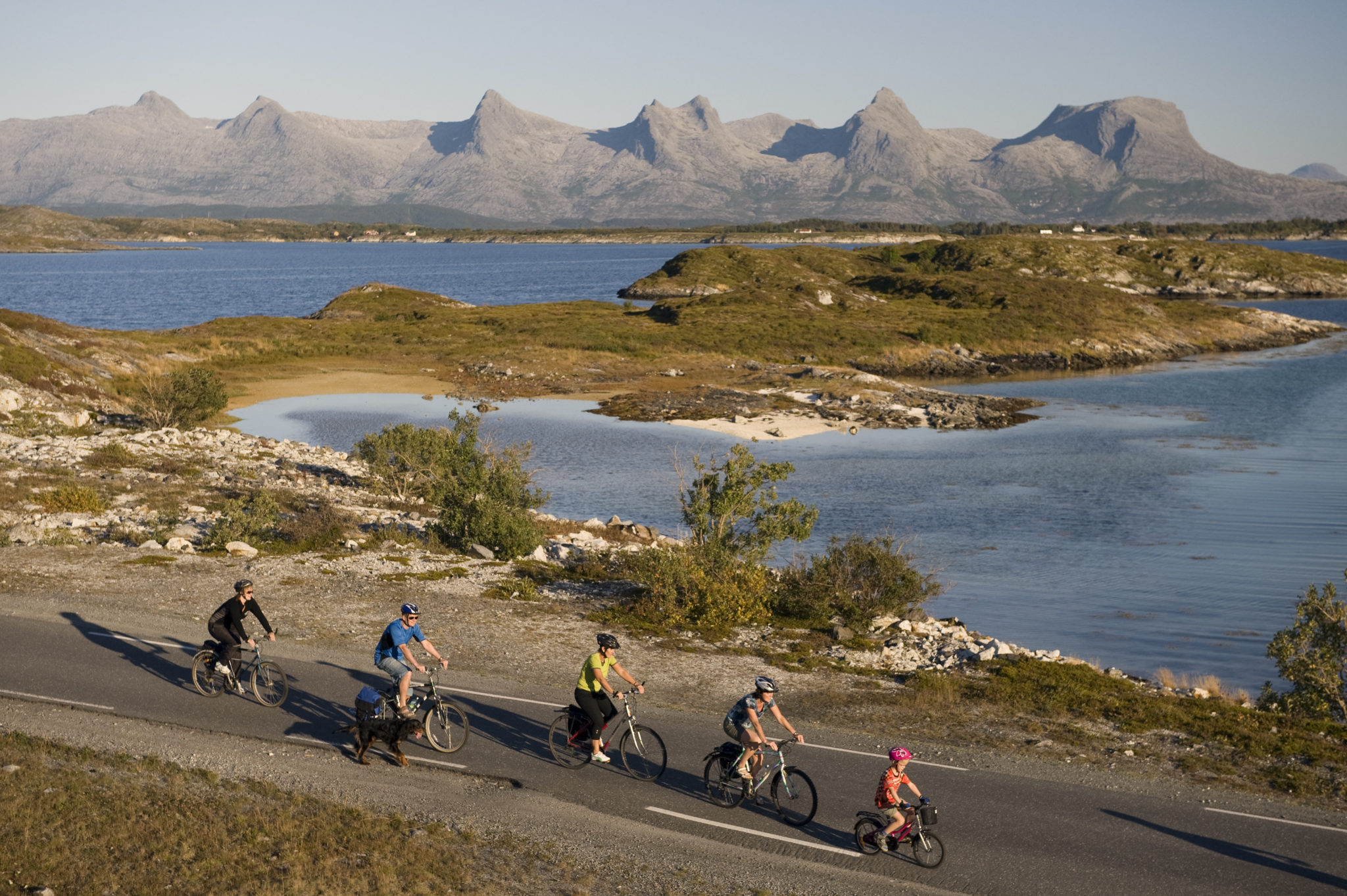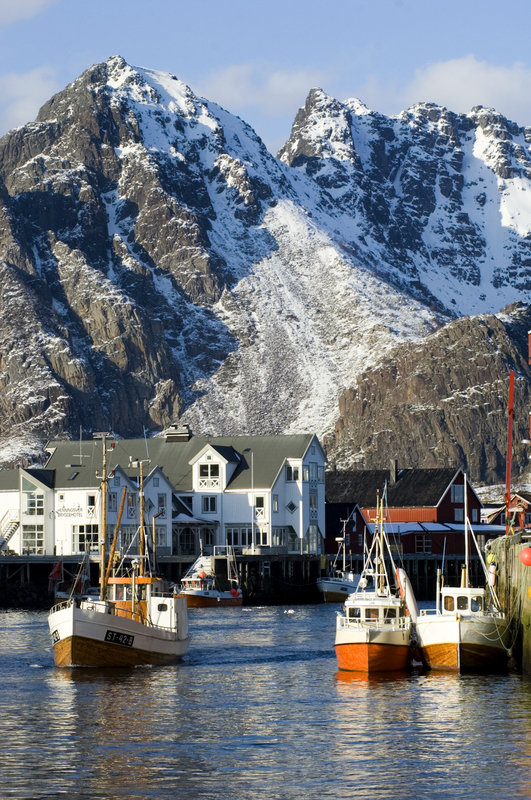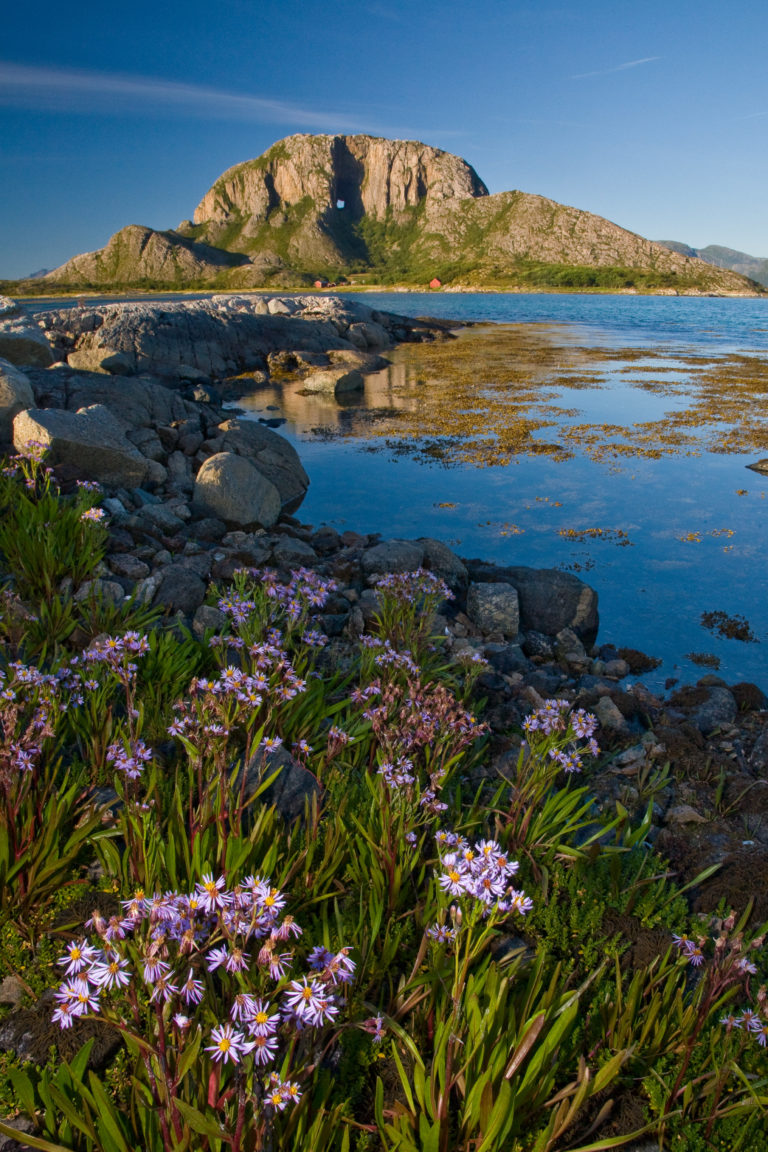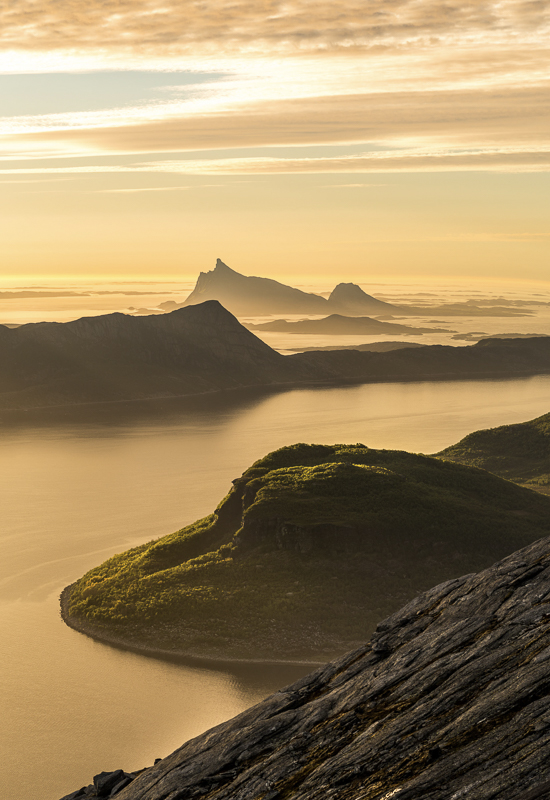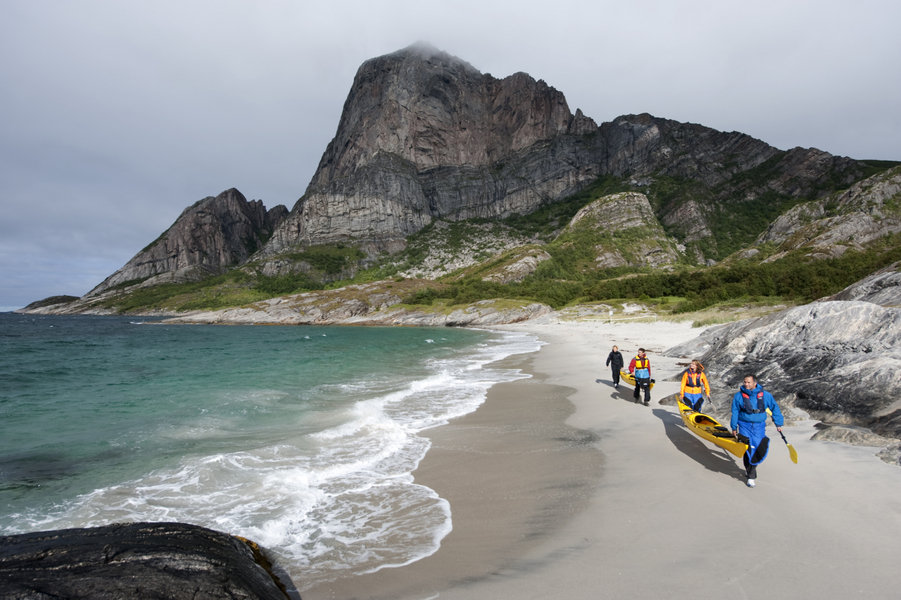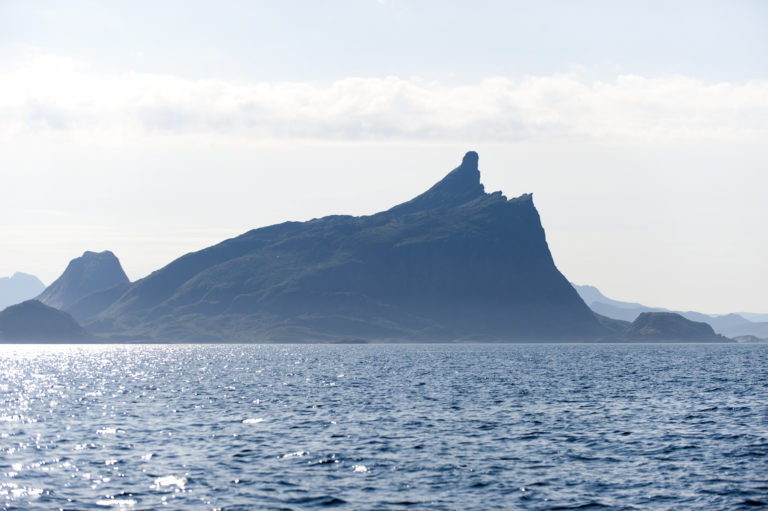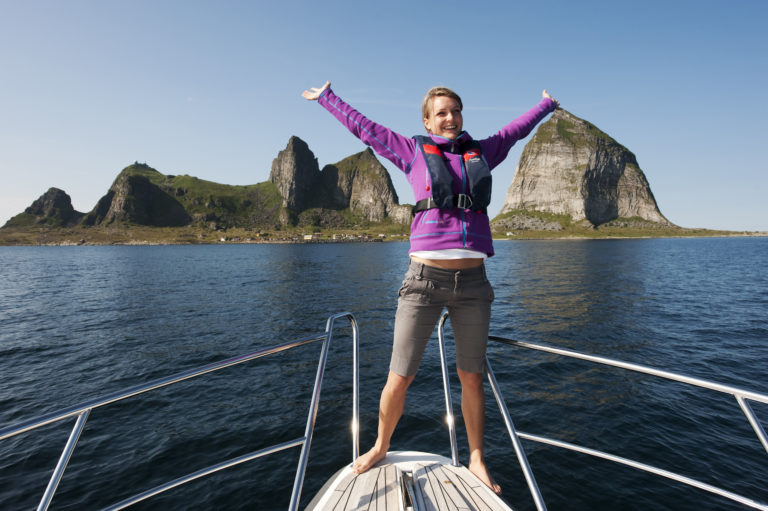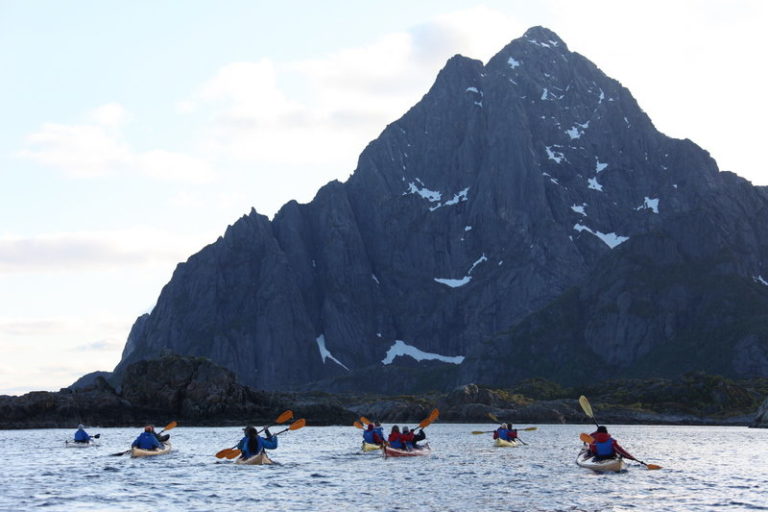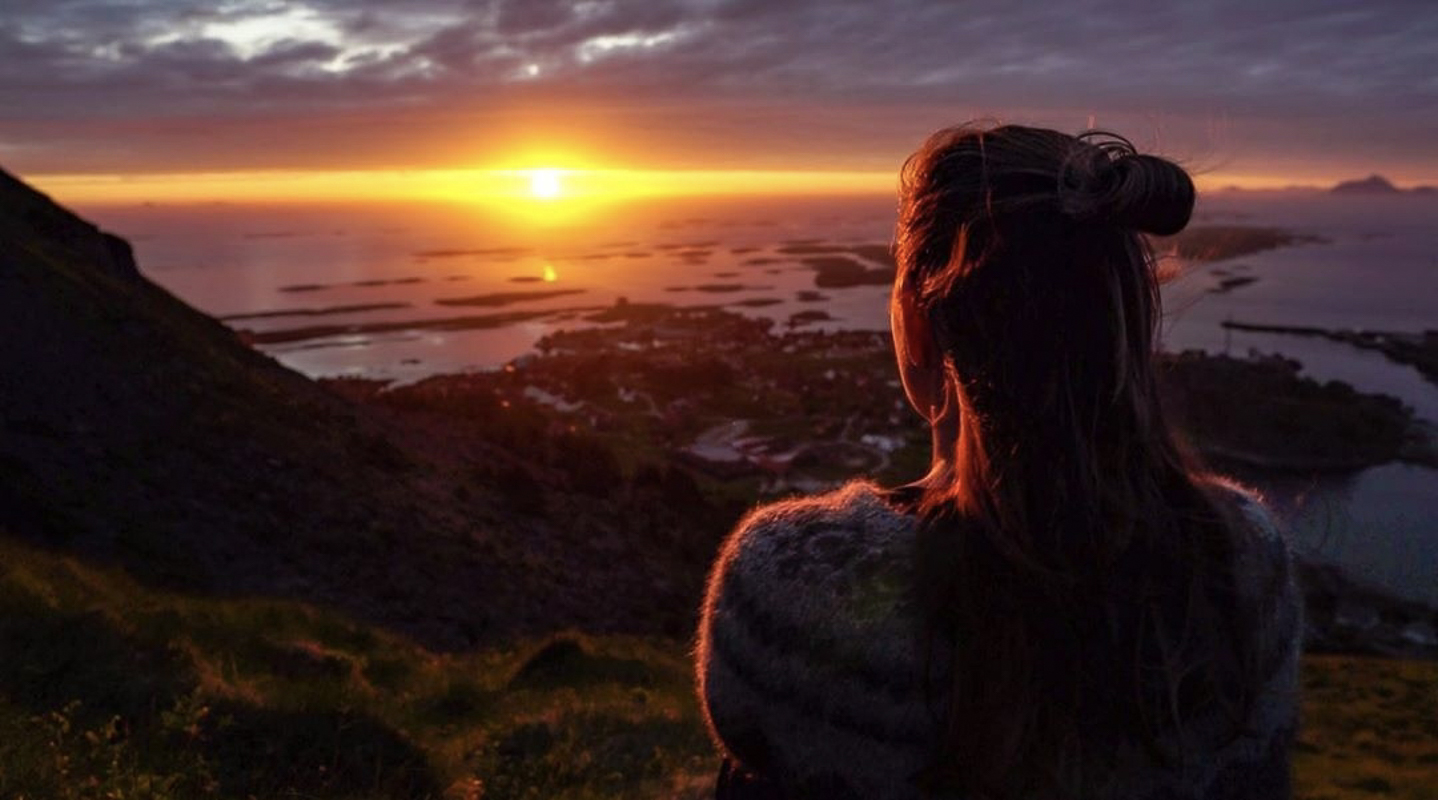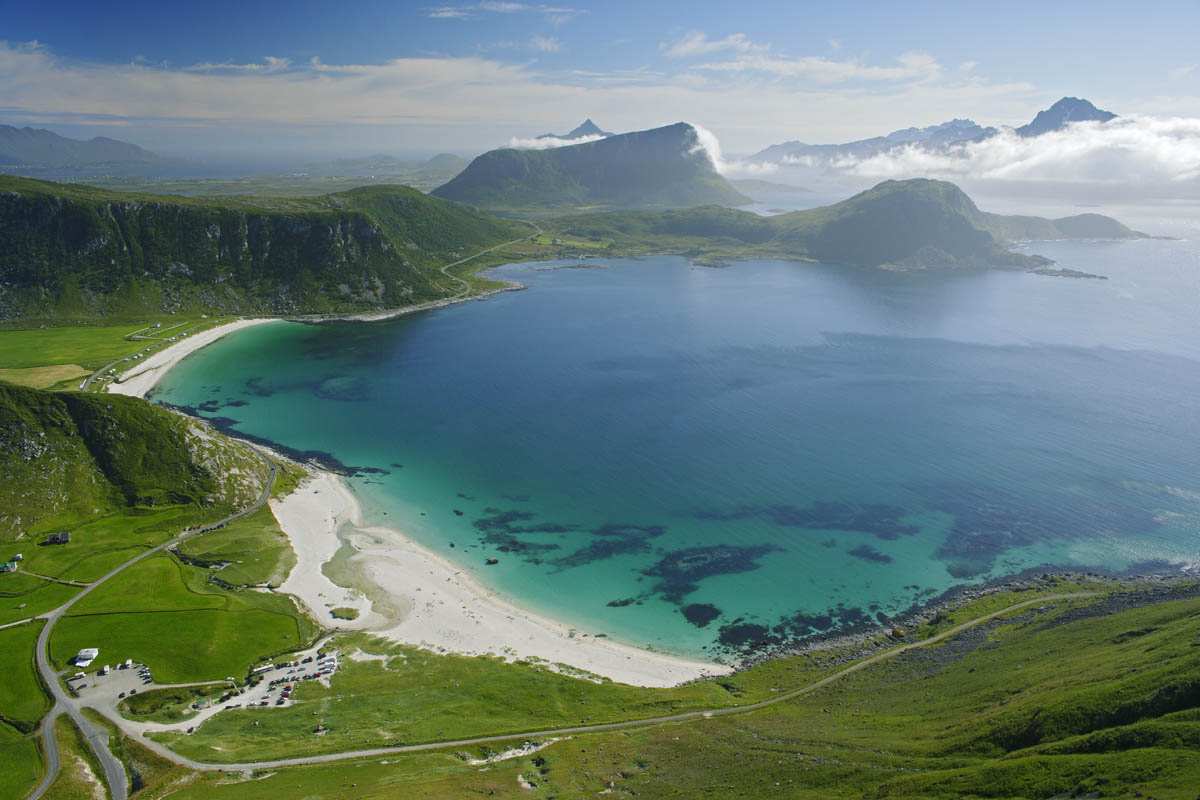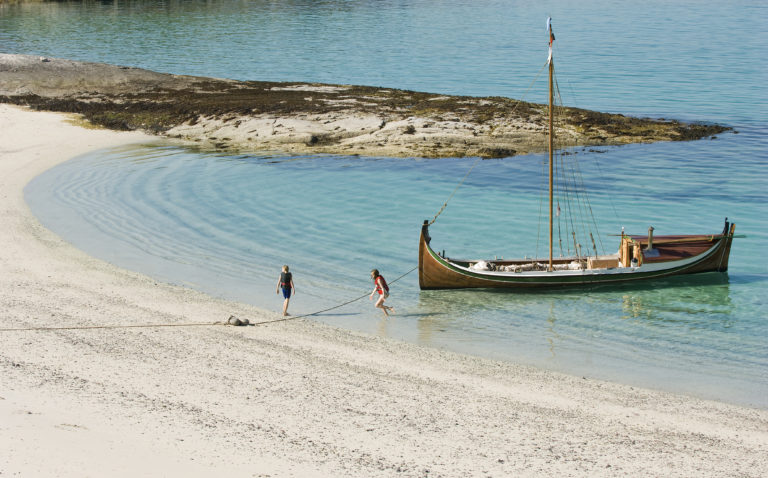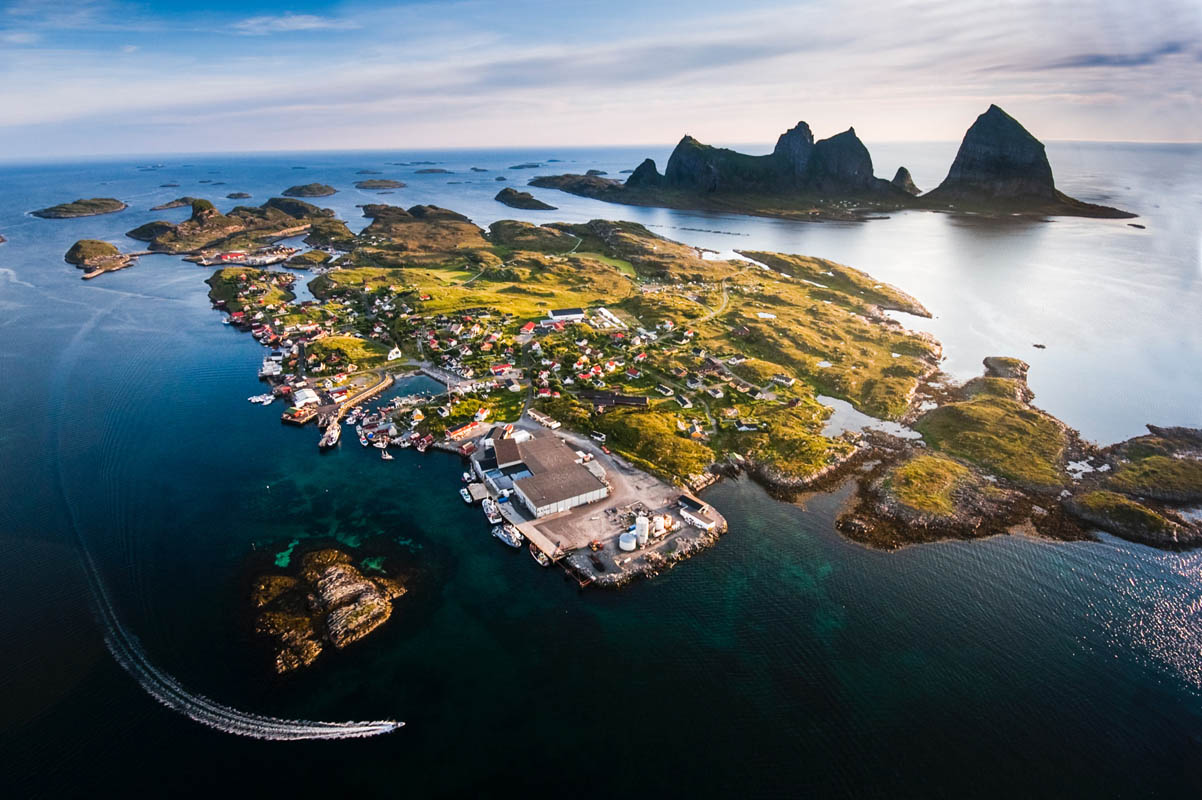Far north in Hålogaland, two old men once sat on opposite sides of Vestfjorden and stared furiously across the water at each other. They hated each other, because they both wanted to be the leader of the pack. They also had very different dispositions as one was a mountain man, and the other a mariner.
Vågakallen is the Lofoten Patriarch
To the west, it was Vågakallen – the Old Man of Våga – who sat on his throne, a thousand metres above the sea at Henningsvær. His kingdom comprised the entire mountain world of Lofoten as well as Vestfjorden and its millions of cod. For millennia, he had looked out over the mountains and the sea, defying storms, breakers and Thor’s hammer – and taking whatever he wanted.
Landegomøya is the maiden in love with Vågakallen
Across Vestfjorden, on the island of Landego, sat Landegomøya – the Maiden of Landego – and gazed longingly towards Vågakallen. He was her secret lover and she was with child by him – even though she was, in a sense, engaged to Blåmannen, the Blue Man, north of Sulithjelma. Landegomøya was head-over-heels in love with Vågakallen. In the morning she saw his purple cloak, and in the evening the sun glinted off the golden crown on his head.
Hestmannen was an uncontrollable youth
The Vågakallen had just one son. He was known as Hestmannen (the Horseman) because he was always riding. He was a wild, uncontrollable youth. After a row with his father, he ran away from home and settled in Svolværfjellet with Svolværgeita, the Svolvær Goat. Hestmannen soon outgrew his father in every respect, and it was seriously inadvisable to approach him while he was in one of his wild moods.
Suliskongen is the old man with riches
In the east sat Suliskongen (the King of Sulis) and guarded his realm. He was king of the mighty mountain plains and the wilderness of lakes and forests along the mountain border with Sweden and again he chuckled secretively to himself because only he knew that the mountains beneath his feet concealed untold riches of copper ore and other precious metals.
In spite of everything, the two old men – Vågakallen and Suliskongen – agreed on one thing: there was no controlling the youth of today!
The Seven daughters live happily in the sunshine
Suliskongen had seven daughters, who made his life unbearable on a daily basis. Finally, he decided that there was nothing to be done with them except to pack them off to Landego with Landegomøya as their governess. He then engaged Lekamøya – the Leka Maid – a very respectable nanny from the south, to look after the frisky girls. On Landego, the seven daughters lived quietly and happily in the sunshine, and during the long winter nights, the Northern Lights blazed in the sky above this idyllic tableau.
Uncontrollable passion drove Hestmannen to the Seven Sisters
But then one night in May, Hestmannen was sitting on his mountain at Svolvær, gazing out over Vestfjorden to Landego. He spotted Lekamøya and the seven sisters bathing in the surf under the bright spring sky. Hestmannen was instantly consumed with wild passion. Fully armoured, he leapt onto his horse, slung a cloak over his shoulders and galloped the 150 km across Vestfjorden. The plume on his helmet was tossed by the wind as he raced south, and the plankton in the water blazed like sparks from his horse’s hooves. Even worse was the fire in the Hestmannen’s eye, but Lekamøya had spotted the approaching sorcery. She immediately realised that resistance would be futile and that prayers for mercy would fall on deaf ears, so she gathered the seven sisters to her and they fled south as fast as their legs could carry them.
Rødøyløva – the Rødøy Lion – lay wakeful in its lair, listening in amazement to the strange noise and confusion heading its way from the north.
The Seven Sisters prepared themselves for the handsome Hestmannen
Suliskongen’s daughters soon realised that it was both foolish and conceited to flee in this manner. Moreover, Hestmannen was a particularly manly and handsome gentleman! So one by one, they cast off their cloaks, which fell into the sea and formed the island of Dønna. The seven sisters then lined up and made themselves as inviting as they possibly could: first Botnkrona – the youngest and slimmest – then Grytfoten, Skjeringen and the Twins, then Kvasstinden and, farthest to the south, Breitinden, the eldest. Breitinden was actually carrying an illegitimate child, but that did not keep the adventurousness from all their eyes.
Lekamøya tried to escape but was chased by an arrow
However, the seven sisters could have saved themselves the trouble. Hestmannen did not so much as look at them – he only had eyes for Lekamøya. She continued to flee southwards, and when she reached Tjøtta she cast away her baking tray, rolling pin and spatula before hastening on with giant strides.
When Hestmannen realised that he could never catch up with her, he was overcome by furious rage. He drew back his mighty bow and sent an arrow speeding towards Lekamøya.
A giant’s hat saved Lekamøya
In the mountains down by Brønnøy, another giant sat watching the performance with immense enjoyment. But when he saw the arrow speeding through the air he hurled his hat into its path. The arrow pierced both sides of the hat, which then sank into the sea. And there it lies to this day – Torghatten, with a hole right through it. Meanwhile, Lekamøya sneaked across the border to North Trøndelag and was saved.
And then the sun rose turning the trolls into stone
Spring nights are only short in Nordland, and at that very moment, the sun rose above the coastal horizon. All the trolls were turned to stone where they stood – and there they will stand until the end of the world. Lekamøya at Leka, Torghatten near Brønnøysund, The Seven Sisters at Alsten near Sandnessjøen, Hestmannen in Lurøy – right on the Arctic Circle, Rødøyløva near Rødøy, Landego near Bodø, Suliskongen on the border with Sweden – and Vågakallen high in his seat above the waters of Vestfjorden.
